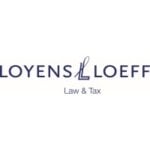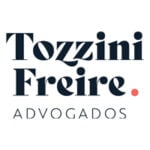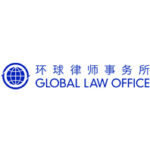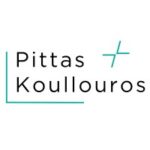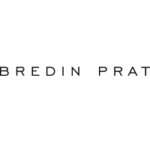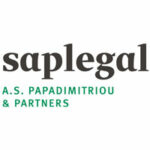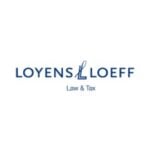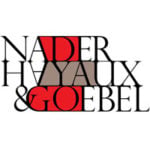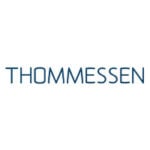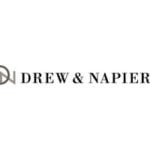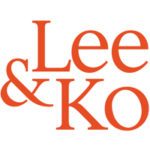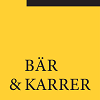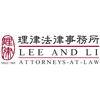-
What proportion of transactions have involved a financial sponsor as a buyer or seller in the jurisdiction over the last 24 months?
In Austria, approximately half of all reported M&A transactions over the past two years have involved financial sponsors, such as private equity funds and venture capital firms, indicating the appeal of Austrian mid-market companies. This trend is largely driven by the growing demand among family-owned businesses for growth capital, succession planning, or structured exits. Also the fact that the challenging environment across Europe led to some financial sponsors being open for smaller transactions may have been advantageous for a smaller market such as Austria.
Financial sponsors play a vital role in various sectors, including software, technology, healthcare, renewable energy, and real estate, where they add value by providing not just capital, but also strategic guidance.
Moreover, the presence of EU regulations and recent initiatives around foreign direct investment screening have impacted transactions. These regulations require increased scrutiny, which can affect the timing and structure of deals. Financial sponsors bring experience in navigating such regulatory landscapes, as well as flexible structuring options, but depending on their fund structure may have sometimes encountered disadvantages in auctions vis-à-vis bidders that qualified as EU investors.
-
What are the main differences in M&A transaction terms between acquiring a business from a trade seller and financial sponsor backed company in your jurisdiction?
In Austria, M&A transaction terms can vary significantly between acquisitions involving trade sellers and those backed by financial sponsors, primarily due to differences in objectives, transaction structuring, and risk tolerance.
When acquiring from a trade seller, buyers often face a transaction process that is more aligned with operational continuity and strategic goals rather than short-term value maximization. Trade sellers, which are usually industry players themselves, tend to prioritize the alignment of post-merger operations and longer-term synergy creation, leading to more detailed integration planning and potentially longer transaction timelines. This focus on operational continuity means that trade sellers often retain an interest in the business post-closing, either through minority shares, advisory roles, or transitional support. As a result, warranties and representations from trade sellers are often more extensive, covering operational aspects, compliance, and long-term liabilities, providing buyers with greater assurances of continuity. Trade sellers may also lean toward a closing account mechanism, which adjusts the purchase price based on actual values of working capital and net debt at closing, ensuring a final price that reflects the actual financial position.
In contrast, financial sponsors focus heavily on maximizing exit value and ensuring a swift, efficient process, as they generally seek to exit entirely, marking a clear separation upon completion of the transaction. Financial sponsor-backed companies often come with a streamlined corporate structure and lean operations, designed specifically for sale, which can allow for a faster transaction process. To facilitate a swift exit, financial sponsors frequently employ “locked-box” pricing mechanisms, where the purchase price is based on a fixed historical balance sheet date, and any post-signing financial leakage is limited by specific contractual covenants rather than closing accounts. This approach can be attractive to buyers looking for price certainty, as it avoids the need for post-completion adjustments and provides transparency in pricing. However, locked-box mechanisms also transfer certain operational risks to the buyer, which buyers must weigh carefully in their due diligence.
Additionally, financial sponsors are more likely to incorporate mechanisms such as earn-outs or contingent consideration based on future performance, especially in cases where growth potential is central to valuation. However, earn-outs are more common in private, non-sponsor transactions, as financial sponsors usually have a set target return and timeline for their investment and may not wish to depend on uncertain future performance for their full exit value.
Differences in risk allocation are also evident, as trade sellers may generally be more conservative in their approach, providing standard warranties and requiring buyers to assume more of the operational and financial risk post-transaction. Financial sponsors, on the other hand, often employ buyer-friendly structures like warranty and indemnity (W&I) insurance, transferring risk to third-party insurers and reducing the likelihood of post-closing recourse against the sponsor. This enables a clean exit and a simpler post-closing relationship, though it can limit the buyer’s recourse options.
In summary, transactions with trade sellers in Austria are generally characterized by a focus on continuity, conservative risk allocation, and flexibility in terms of post-closing involvement. Financial sponsor-backed deals, in contrast, are optimized for speed and exit certainty, often with innovative pricing and risk allocation mechanisms. Understanding these differences is critical, as each type of seller brings unique transaction dynamics and structuring considerations, impacting due diligence, risk assessment, and negotiation approaches.
-
On an acquisition of shares, what is the process for effecting the transfer of the shares and are transfer taxes payable?
In Austria, the process for transferring shares differs depending on the type of company – between a Private Limited Company (GmbH) and a Public Limited Company (AG):
a) Private Limited Company (GmbH):
Notarial Deed Requirement: The transfer of shares in a GmbH requires a notarial deed. This means that the share purchase agreement (SPA) must be executed in the presence of a notary, who formalizes the document as an official notarial deed. Both the sale as well as the transfer of the shares need to be documented as a notarial deed. Note that for deeds in foreign language, the notary also needs to be qualified as a sworn translator.
Execution of the Share Purchase Agreement (SPA): Both the seller and the buyer (or their attorneys in fact based on notarized PoAs) must sign the SPA in the presence of the notary to complete the transfer. In the meantime also virtual notarization are possible.
Registration in the Companies Register: After the notarial deed is executed, the share transfer is registered in the Austrian Companies Register. This registration, which has only declarative effect, ensures public transparency regarding ownership and legal enforceability of the transfer.
For the newly introduced FlexCo certain simplifications apply.
b) Public Limited Company (AG):
Publicly Traded Shares: For publicly traded shares, the transfer usually occurs electronically through a securities depository and is settled within the electronic trading and clearing systems.
Non-Publicly Traded Shares: For shares in a non-publicly traded AG, a written share purchase agreement suffices, and no notarial deed is required. However, the transfer must be entered in the shareholders’ register kept by the company to recognize the buyer as the new shareholder.
In Austria, no specific transfer tax is imposed on the transfer of shares in either a GmbH or an AG. However, depending on the transaction structure, certain costs and taxes may be relevant:
Notary Fees: In the case of a GmbH, notarial fees apply due to the required notarial deed. These fees are typically calculated based on the transaction value or the complexity and time involved.
Stamp Duties and Other Fees: Generally, no stamp duties apply to the share transfer itself. However, certain ancillary agreements (such as guarantees or security arrangements) may trigger stamp duties.
Real Estate Transfer Tax (RETT): If the GmbH or AG being acquired directly owns real estate in Austria, real estate transfer tax may be triggered if the transfer results in an indirect acquisition of Austrian real estate (threshold of 95%).
-
How do financial sponsors provide comfort to sellers where the purchasing entity is a special purpose vehicle?
In Austria, when financial sponsors acquire companies through a special purpose vehicle (SPV), providing comfort to sellers about the SPV’s financial reliability becomes critical, given the SPV’s typical lack of operating assets. Sponsors commonly use several methods to assure sellers of the SPV’s financial backing, with the primary tools being parent guarantees, equity commitment letters, and escrow accounts:
- Parent Guarantees and Equity Commitment Letters: Often, the financial sponsor issues a parent guarantee or an equity commitment letter from the parent fund. In this letter, the sponsor commits to fund the acquisition through the SPV, guaranteeing the full payment of the purchase price upon closing. The equity commitment letter acts as a formal assurance that the SPV will be backed by the sponsor’s capital, thereby eliminating doubts about the buyer’s financial capability. This commitment letter may specify that the sponsor is required to provide the necessary equity or debt financing, reinforcing the financial stability of the transaction for the seller.
- Escrow Accounts: Another common approach involves the establishment of an escrow account into which a portion of the purchase price is deposited. This account provides additional security to the seller by holding funds that are only released upon fulfilling specific closing conditions. Escrow accounts are particularly useful in Austria for managing post-closing adjustments or contingent liabilities. These funds can cover claims or other potential issues that arise after the transaction, offering the seller reassurance of immediate recourse should any financial obligations be unmet.
- Bank Guarantees: In some transactions, financial sponsors offer a bank guarantee for the purchase price, where the bank commits to paying the seller if the buyer defaults. This instrument offers sellers a high degree of confidence since it provides an independent guarantee of payment, further solidifying the sponsor’s financial reliability.
- Conditional Escrow Arrangements: It is also becoming more common in Austrian transactions to see conditional escrow arrangements. This structure allows a portion of the purchase price to be held in escrow for a predetermined period, to cover specific contingencies or warranty claims that may arise post-closing. Such conditional arrangements not only mitigate risk for the seller but also demonstrate the sponsor’s commitment to honoring post-closing obligations.
By providing these types of assurances, financial sponsors in Austria effectively mitigate the seller’s concerns about the financial risks associated with SPV acquisitions. The range of comfort mechanisms—from parent guarantees and equity commitments to escrow funds and bank guarantees—creates a strong financial security net, enabling sellers to move forward confidently with the transaction. This proactive approach also enhances the sponsor’s competitive position in negotiations, as sellers are more likely to prefer buyers who can provide clear and reliable financial backing, even when using an SPV as the purchasing entity.
-
How prevalent is the use of locked box pricing mechanisms in your jurisdiction and in what circumstances are these ordinarily seen?
The use of locked-box mechanisms is increasingly common in Austrian private equity transactions, particularly when financial sponsors are involved. This mechanism fixes the purchase price based on the target’s financial status as of a specified date, the “locked-box” date, preventing any adjustments due to changes in the target’s financial condition between signing and closing. This structure benefits sellers by ensuring predictable pricing without subjecting them to future valuation adjustments. For buyers, locked-box mechanisms offer financial predictability and allow for precise pricing while reducing transactional complexity. Financial sponsors favor locked-box mechanisms because they eliminate the need for post-closing adjustments, streamlining the purchase process. These mechanisms are particularly effective in competitive auction processes, where sellers and buyers seek efficient, transparent pricing methods. In the Austrian context, locked-box provisions are typically accompanied by leakage protections to prevent unauthorized value extractions, reinforcing their effectiveness and securing both parties’ interests.
-
What are the typical methods and constructs of how risk is allocated between a buyer and seller?
In Austrian M&A transactions, risk allocation is achieved through a combination of representations, warranties, indemnities, and limitations on liability. Sellers frequently negotiate caps on liability, de minimis thresholds, and basket limits to mitigate risk exposure. Buyers, on the other hand, typically secure specific indemnities for potential known risks identified during due diligence and may include material adverse change (MAC) clauses to safeguard against unforeseen downturns in the target’s business. Financial sponsors often use warranty and indemnity (W&I) insurance to protect against post-closing liabilities, which facilitates negotiations by reducing the need for seller-provided indemnities. This insurance transfers liability risks to an insurer, allowing both parties to reach an agreement more quickly. The Austrian legal environment encourages a balanced risk-sharing approach, where buyers and sellers negotiate limitations on liability and indemnification based on transaction specifics. This approach ensures that transactions proceed with clear risk allocation, reducing potential post-closing disputes.
-
How prevalent is the use of W&I insurance in your transactions?
W&I insurances are widely employed in Austrian private equity transactions, especially in competitive bidding scenarios, to reduce seller exposure to post-closing liabilities. The insurance covers the buyer’s claims under representations and warranties, allowing sellers to limit their post-closing obligations significantly. For financial sponsors, W&I insurance is a strategic tool that facilitates negotiations by enabling risk transfer to a third-party insurer. This practice provides additional assurance to both the buyer and seller, ensuring a smoother transaction. In Austria, W&I insurance has become a market-standard practice, particularly in deals where the seller seeks a clean exit without residual liabilities. By reducing the need for extensive indemnities from sellers, W&I insurance accelerates the transaction process, simplifies negotiation, and provides a backstop for warranty claims, fostering an efficient and mutually beneficial agreement for both parties.
-
How active have financial sponsors been in acquiring publicly listed companies?
Financial sponsors in Austria have generally been less active in acquiring publicly listed companies, largely due to regulatory hurdles and stringent compliance obligations that come with such transactions. Austrian law, particularly the Austrian Takeover Act (Übernahmegesetz), requires a mandatory public offer to all shareholders if an acquisition results in a 30% or greater stake in a listed company. This requirement is designed to protect minority shareholders, ensuring they are offered an exit at fair terms in the event of a significant change in ownership. For financial sponsors, however, this regulation can increase acquisition costs and introduce complexities in deal structuring, as acquiring control in a listed company automatically escalates the financial commitment due to the need to acquire all outstanding shares if other shareholders opt to sell.
Furthermore, there are mandatory reporting requirements for any substantial share acquisition in publicly listed companies. Financial sponsors must disclose detailed financial information and strategic intentions, ensuring full transparency in the takeover process. This level of public scrutiny often deters financial sponsors who prioritize confidentiality and flexibility in their investment strategies. Additionally, the Takeover Act’s strict deadlines for public offers leave limited room for prolonged negotiation or the kind of intricate structuring often associated with private equity deals.
Despite these obstacles, there is a noticeable, albeit modest, increase in interest among financial sponsors regarding public company acquisitions in Austria. This trend is mainly driven by a rise in undervalued public assets, particularly in times of economic fluctuation, where share prices may not fully reflect intrinsic value. Nonetheless, sponsors often still lean toward private transactions to avoid the procedural rigor of public acquisitions, favoring the relative ease and adaptability of acquiring privately held companies where they can negotiate terms more flexibly and maintain greater control over transaction disclosures.
In terms of infrastructure assets, financial sponsors have shown steady interest, particularly in areas like energy, telecommunications, and transportation, as these sectors align well with the long-term, stable returns sought by many institutional investors. The Austrian government has welcomed foreign investment in infrastructure, provided it aligns with national strategic interests. The appeal of infrastructure investments continues to grow as Austria modernizes its infrastructure, offering financial sponsors opportunities in public-private partnerships, renewable energy, and digital infrastructure projects.
-
Outside of anti-trust and heavily regulated sectors, are there any foreign investment controls or other governmental consents which are typically required to be made by financial sponsors?
Yes, Austrian investment control approval is required under certain conditions: An Austrian investment control approval is required if (a) a foreign person (i.e., non-EU, non-EEA or non-Swiss) (b) directly or indirectly acquires (i) voting rights of at least 25% or 50% (in particularly vulnerable sectors 10%) in, (ii) a controlling influence over or (iii) assets of (c) an Austrian company, which is (d) active in a “critical” sector as defined in the Austrian Investment Control Act. The list of “critical” sectors and its interpretation by the authorities is very expansive and covers most commercial activities. For example, IT companies are always deemed to be active in the critical “information technology” sector. Furthermore, if the ultimate beneficial owner of the acquirer is not a foreign person itself, but any of its direct or indirect participations through which it controls the Austrian target is foreign, this will be sufficient to trigger the investment control approval requirement (provided the other mentioned conditions are met as well). Acquisitions of microenterprises (less than 10 employees and either the annual balance sheet total or turnover is less than EUR 2m) are exempted from the investment control approval requirement.
-
How is the risk of merger clearance normally dealt with where a financial sponsor is the acquirer?
To address merger clearance risks in Austria, financial sponsors on sell-side try to incorporate “hell or high water” clauses in transaction agreements, obligating the buyer to make all necessary efforts to secure regulatory approval. This can include agreeing to divest overlapping business operations or restructure certain assets to satisfy the Austrian Federal Competition Authority (BWB). Alternatively, some financial sponsors negotiate reverse break fees, payable by the buyer if clearance is not obtained, thus incentivizing the buyer to pursue regulatory approval proactively. In complex cases, financial sponsors may opt for phased or conditional closings, which enable portions of the transaction to proceed while awaiting clearance for specific aspects. By incorporating such contractual safeguards, financial sponsors effectively manage regulatory risks, ensuring that transactions proceed smoothly while addressing the potential for delayed or denied merger clearances from Austrian competition authorities.
-
Have you seen an increase in (A) the number of minority investments undertaken by financial sponsors and are they typically structured as equity investments with certain minority protections or as debt-like investments with rights to participate in the equity upside; and (B) ‘continuation fund’ transactions where a financial sponsor divests one or more portfolio companies to funds managed by the same sponsor?
Yes, in Austria, financial sponsors have increasingly engaged in minority investments, a trend reflecting global private equity practices that prioritize flexibility and lower risk exposure. These investments are structured to protect minority interests through mechanisms such as preferred voting rights or veto powers on key corporate decisions. Typically, shareholders’ agreements define these minority protections, covering areas like capital restructuring, strategic acquisitions, significant expenditures, and changes to the company’s management. Often such investments are also accompanied by options to acquire a majority at a later point in time. While minority investment structures require precise legal drafting to ensure enforceability, particularly in matters concerning corporate governance and shareholder rights, they afford sponsors the opportunity to retain some control and influence over a company without assuming full ownership responsibilities.
In addition, continuation funds have gained traction, whereby a sponsor transfers portfolio companies from one fund to another they manage. This transaction type enables sponsors to retain valuable portfolio companies while providing liquidity to existing investors. Continuation fund structures are viable in Austria and can be beneficial for sponsors aiming for additional growth phases or positioning assets for a future strategic exit.
-
How are management incentive schemes typically structured?
In Austria, management incentive schemes are predominantly equity-based, and they serve to align the management team’s interests with those of the financial sponsor. These schemes are structured to include share options, restricted stock, or similar performance-based equity mechanisms that offer management an opportunity to benefit directly from the company’s growth. In addition, phantom shares or stock appreciation rights allow management to participate in value appreciation without actual equity ownership, a favorable approach for smaller companies.
The design of these schemes in Austria requires a careful balance to adhere to local employment laws while maximizing tax efficiency for both the company and its executives. Additionally, structuring may involve setting performance targets tied to EBITDA or revenue milestones, thus driving company profitability. The institutional strip (pari passu investment) and the Sweet Equity will usually be implemented on a contractual basis with liquidation preferences in case of an exit to be determined in a waterfall provision in the shareholders’ agreement and a respective opening clause in the articles of association.
To further incentivize retention, Austrian schemes often include vesting schedules with minimum holding periods, typically spanning three to five years, and they may have clawback clauses to protect against poor performance or misconduct. With cross-border structures, Austrian incentive schemes sometimes include considerations for international tax implications, ensuring that beneficiaries in various jurisdictions are not disproportionately burdened by the scheme.
-
Are there any specific tax rules which commonly feature in the structuring of management's incentive schemes?
The Austrian tax regime mandates specific guidelines for management incentive schemes, especially those involving equity awards or profit-sharing. These incentives are either treated as income and taxed at the individual’s marginal tax rate, while capital gains derived from equity stakes enjoy a preferential capital gains tax rate (27.5%).
The structuring of such schemes demands precise planning to achieve optimal tax efficiency. In this context it is considered relevant that the investment is separate from the management’s compensation. Also the risk of a potential loss of such investment is considered crucial. In addition the sweet equity component should be compensated by the investing manager based on a separate valuation.
Stock options, a common element of these schemes, may be taxed at exercise, with the tax basis calculated based on the difference between the option’s strike price and the market price at exercise.
Austrian tax law also permits roll-over relief under certain conditions for management buy-ins. Tax advisors play a key role in crafting management incentive schemes that minimize tax burdens while ensuring compliance with tax laws. The evolving legal landscape around capital gains and the treatment of employee stock options necessitates proactive measures to prevent any adverse tax impact.
-
Are senior managers subject to non-competes and if so what is the general duration?
In Austria, non-compete clauses are commonly included in executive employment contracts, especially for senior management within private equity-backed firms, where sensitive information and client connections are critical assets. Austrian courts uphold non-compete clauses provided they are reasonable in terms of duration, scope, and geographic limitation. Typically, non-compete clauses last between six months to two years following the termination of employment. To enhance enforceability, companies may agree to provide financial compensation for compliance with the non-compete, especially if it extends beyond a year.
Additionally, the Austrian Trade Act mandates that these clauses be drafted narrowly to prevent undue restriction on the executive’s professional mobility. Non-compete clauses in Austria are often accompanied by non-solicitation provisions, which prevent executives from recruiting former colleagues or clients to their new employers. Austrian companies and investors prefer these clauses to protect trade secrets, sensitive data, and customer relationships. In sectors such as finance and technology, where intellectual property and proprietary information are highly valued, enforceable non-compete and non-solicitation clauses form a critical part of the legal framework for executive contracts.
-
How does a financial sponsor typically ensure it has control over material business decisions made by the portfolio company and what are the typical documents used to regulate the governance of the portfolio company?
To maintain control over significant business decisions, financial sponsors in Austrian portfolio companies utilize reserved matters in shareholders’ agreements and articles of association. Reserved matters typically cover crucial business decisions, such as mergers, significant capital expenditures, and strategic acquisitions, which cannot be undertaken without sponsor approval. Additionally, sponsors often appoint directors or board members who have veto rights on critical decisions, enabling direct oversight without disrupting daily management.
The governance structure is designed to give sponsors control over major strategic choices while leaving operational independence to local management. This structure is frequently supplemented with formal reporting requirements, mandating portfolio companies to provide regular financial statements, operational updates, and progress on key performance metrics. In Austria, board structures allow sponsors to engage through a dual system comprising a management board for operational decisions and an advisory or a supervisory board for strategic oversight. This approach balances investor protection with effective day-to-day management, ensuring compliance with corporate governance standards. Sponsors achieve strong oversight without overstepping the boundaries of Austrian corporate law, maintaining a balance between strategic influence and operational independence.
-
Is it common to use management pooling vehicles where there are a large number of employee shareholders?
The pooling of management interests in Austrian companies, especially in private equity settings, is often accomplished using pooling vehicles, usually in the form of asset-managing partnerships (Kommanditgesellschaft, or KG). This approach consolidates the interests of multiple managers or executives, enabling streamlined decision-making and coordination regarding their shared ownership stakes. In addition, pooling vehicles facilitate governance and simplify voting procedures, as a single representative can act on behalf of the entire group.
The vehicle’s structure also provides an efficient exit route, allowing managers to collectively participate in a liquidity event or sale. Austrian law allows these pooling arrangements, provided they comply with local corporate and tax regulations. Tax considerations are central to the structure, as pooling arrangements can help align management incentives without incurring unnecessary tax liabilities.
-
What are the most commonly used debt finance capital structures across small, medium and large financings?
In Austrian private equity transactions, debt financing structures vary depending on the transaction’s size and complexity. Still most private equity transactions would be financed through bank debt, rather than through private debt provided by funds (but see 21. on the developments in this regard.
Senior secured loans are the primary form of financing for large-cap companies, often provided by syndicates led by major Austrian and European banks. These loans are secured – to the extent possible – against the assets of the target company or at least shares therein. Mezzanine financing is typically used for mid-market and smaller deals, often provided by specialist funds or institutional investors willing to accept higher risk for a higher return. Mezzanine financing is usually structured as subordinated debt, carrying fixed or floating interest rates and equity conversion rights. Small-cap transactions, however, may rely more on simple bank loans due to their accessibility and reduced structuring complexity.
A notable trend in Austria has been the increased use of unitranche debt, which blends senior and subordinated debt into a single tranche, simplifying the capital structure. Unitranche debt offers greater flexibility in terms of repayment schedules and interest structures, making it attractive for companies seeking straightforward financing options.
-
Is financial assistance legislation applicable to debt financing arrangements? If so, how is that normally dealt with?
Under Austrian law, financial assistance is a regulatory framework preventing a company from providing direct or indirect support for acquiring its shares or those of its parent company. This rule applies in leveraged buyout transactions where acquirers might otherwise use the target’s assets as security or financing support. There is also the prohibition of return of capital which has to be observed in that regard. Austrian law strictly regulates any attempt to use the target’s assets for acquisition financing, which could otherwise distort the company’s financial stability and compromise creditor protection.
Non-compliance with these restrictions can result in significant consequences, including personal liability for directors. As an alternative, some sponsors use debt push-down structures after the acquisition to shift debt onto the target’s balance sheet. Austrian legal advisors play a crucial role in structuring these deals to ensure compliance with financial assistance restrictions while achieving the client’s financing objectives. This structuring is critical for preventing voidable transactions and ensuring alignment with Austrian corporate governance principles.
-
For a typical financing, is there a standard form of credit agreement used which is then negotiated and typically how material is the level of negotiation?
Credit agreements in Austrian private equity transactions frequently use standard documentation templates, such as those developed by the Loan Market Association (LMA). These templates serve as a basis, providing a clear structure for common provisions like interest calculations, covenants, and event-of-default clauses. However, customization is typical, as borrowers and lenders negotiate terms to address specific transaction risks, compliance with Austrian regulations, and borrower credit profiles.
In leveraged buyouts and other complex financing arrangements, Austrian sponsors often negotiate terms related to financial covenants, ensuring flexibility in case of financial performance deviations. EBITDA adjustments, particularly for add-backs, are frequently negotiated to provide borrowers with a degree of protection against non-recurring costs.
-
What have been the key areas of negotiation between borrowers and lenders in the last two years?
In the past two years, Austrian borrowers and lenders have focused negotiations on several critical areas, including financial covenants, EBITDA adjustments, and material adverse change (MAC) clauses. Financial covenants are essential in Austrian credit agreements, with borrowers seeking more flexibility to withstand fluctuations in cash flow, especially during economic uncertainty. EBITDA adjustments are also a key focus, particularly concerning add-backs for non-recurring costs, allowing borrowers to present a more favorable financial profile.
MAC clauses have gained importance as they provide lenders with the right to withdraw funding if the borrower’s business or external economic conditions significantly deteriorate. Given the rise in interest rates, lenders have also pursued higher interest margins or floor rates to offset increased lending risks. Austrian private equity sponsors aim to achieve a balanced risk allocation, ensuring sufficient lender protection while allowing borrowers the flexibility to manage operational challenges without breaching covenants prematurely.
-
Have you seen an increase or use of private equity credit funds as sources of debt capital?
Yes, there has been a noticeable increase in the use of private equity credit funds as sources of debt capital in Austria. These funds offer an alternative to traditional bank financing, often providing more flexible terms and faster decision-making processes. In the wake of stricter bank lending regulations, private equity credit funds have filled the financing gap, especially for mid-sized and growth-stage companies.
Private equity credit funds often operate with a higher risk tolerance than banks, enabling them to offer mezzanine and unitranche financing structures that accommodate diverse capital needs. Austrian private equity sponsors increasingly turn to these funds for leveraged buyouts and other capital-intensive transactions, valuing the flexibility and speed they bring to financing.
Austria: Private Equity
This country-specific Q&A provides an overview of Private Equity laws and regulations applicable in Austria.
-
What proportion of transactions have involved a financial sponsor as a buyer or seller in the jurisdiction over the last 24 months?
-
What are the main differences in M&A transaction terms between acquiring a business from a trade seller and financial sponsor backed company in your jurisdiction?
-
On an acquisition of shares, what is the process for effecting the transfer of the shares and are transfer taxes payable?
-
How do financial sponsors provide comfort to sellers where the purchasing entity is a special purpose vehicle?
-
How prevalent is the use of locked box pricing mechanisms in your jurisdiction and in what circumstances are these ordinarily seen?
-
What are the typical methods and constructs of how risk is allocated between a buyer and seller?
-
How prevalent is the use of W&I insurance in your transactions?
-
How active have financial sponsors been in acquiring publicly listed companies?
-
Outside of anti-trust and heavily regulated sectors, are there any foreign investment controls or other governmental consents which are typically required to be made by financial sponsors?
-
How is the risk of merger clearance normally dealt with where a financial sponsor is the acquirer?
-
Have you seen an increase in (A) the number of minority investments undertaken by financial sponsors and are they typically structured as equity investments with certain minority protections or as debt-like investments with rights to participate in the equity upside; and (B) ‘continuation fund’ transactions where a financial sponsor divests one or more portfolio companies to funds managed by the same sponsor?
-
How are management incentive schemes typically structured?
-
Are there any specific tax rules which commonly feature in the structuring of management's incentive schemes?
-
Are senior managers subject to non-competes and if so what is the general duration?
-
How does a financial sponsor typically ensure it has control over material business decisions made by the portfolio company and what are the typical documents used to regulate the governance of the portfolio company?
-
Is it common to use management pooling vehicles where there are a large number of employee shareholders?
-
What are the most commonly used debt finance capital structures across small, medium and large financings?
-
Is financial assistance legislation applicable to debt financing arrangements? If so, how is that normally dealt with?
-
For a typical financing, is there a standard form of credit agreement used which is then negotiated and typically how material is the level of negotiation?
-
What have been the key areas of negotiation between borrowers and lenders in the last two years?
-
Have you seen an increase or use of private equity credit funds as sources of debt capital?

